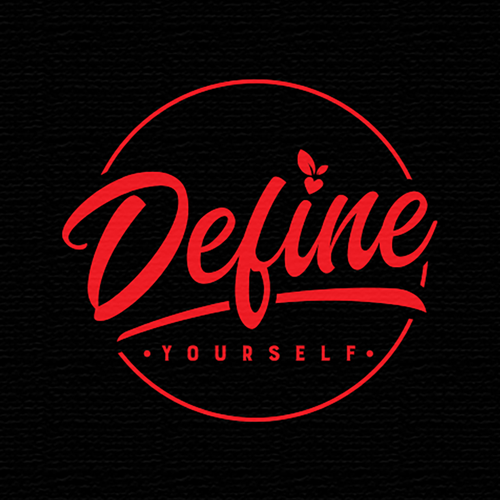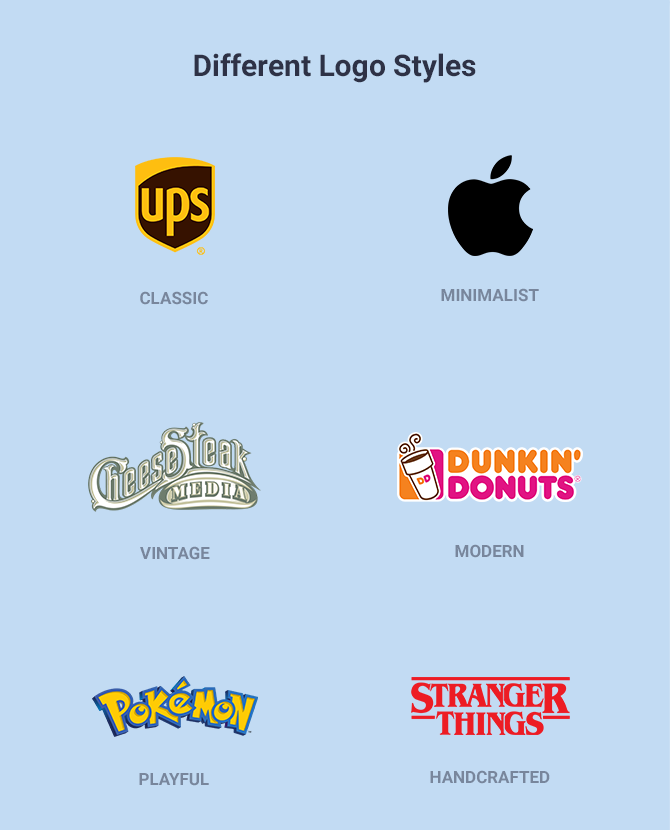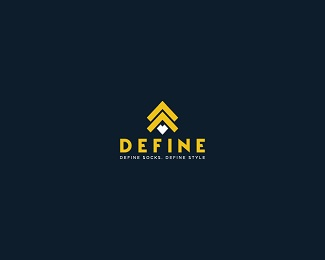A logo is a visual symbol representing a brand’s identity. It communicates the essence of a business in a simple image.
But how do you define a logo effectively? A logo is more than just a graphic. It’s a cornerstone of brand identity. Think of it as the face of a company, embodying its values and mission. A well-designed logo is memorable and versatile, making a strong first impression. It helps in distinguishing a brand in the crowded market. Whether it’s a minimalist design or a detailed emblem, the right logo can tell a brand’s story at a glance. If you need a professional touch, consider hiring a logo designer from Fiverr.

Credit: 99designs.com
Introduction To Defining A Logo
A logo is more than just a graphic. It’s a visual representation of a brand. It communicates the essence of a company at a glance. Understanding what a logo is and its importance is crucial for any business.
What Is A Logo?
A logo is a symbol, mark, or emblem. It is designed to represent a business, organization, or brand. Logos can include text, images, or a combination of both. The primary goal is to create an identity that people can recognize easily.
Logos come in various forms:
- Wordmark: A logo that uses the company name in a stylistic font.
- Icon or Symbol: A graphic that represents the brand without text.
- Combination Mark: A mix of both text and a symbol.
- Emblem: Text inside a symbol or icon.
Importance Of A Logo In Branding
A logo is crucial for branding. It helps in creating a strong brand identity. Here are some key reasons:
| Reason | Description |
|---|---|
| Recognition | A logo makes a brand easily recognizable. |
| Professionalism | A well-designed logo conveys professionalism and trust. |
| Brand Loyalty | Consumers are more likely to stay loyal to a brand they recognize. |
| Marketing | Logos are essential in marketing and advertising efforts. |
A logo is a visual cornerstone of a brand. It should be unique, memorable, and reflect the brand’s values. Investing in a good logo design can have lasting benefits for any business.

Credit: www.creatopy.com
Key Elements Of A Logo
Creating a logo involves several crucial elements. These elements ensure the logo effectively represents your brand and resonates with your audience. Here, we delve into the key components that make a logo impactful and memorable.
Symbolism And Imagery
Symbols and images in a logo convey deeper meanings. They communicate the brand’s core values and identity at a glance. Effective symbols are simple yet powerful. They should be easy to recognize and remember. Think of the Nike swoosh or the Apple logo. These symbols are iconic due to their simplicity and strong association with the brand.
Typography And Fonts
Typography plays a crucial role in logo design. The font style should match the brand’s personality. For instance, a tech company might use a sleek, modern font. In contrast, a children’s brand may opt for a playful, rounded font. Consistency in typography across brand materials ensures a cohesive visual identity.
Color Theory And Psychology
Colors evoke emotions and influence perceptions. Choosing the right colors for a logo is critical. Red can signify passion and energy, while blue often represents trust and professionalism. Understanding color psychology helps in selecting colors that align with the brand’s message. A well-chosen color palette makes the logo stand out and be memorable.
| Color | Emotion |
|---|---|
| Red | Passion, Energy |
| Blue | Trust, Professionalism |
| Green | Growth, Harmony |
Versatility And Scalability
A great logo is versatile and scalable. It should look good on various mediums, from business cards to billboards. The design must remain clear and recognizable at any size. Scalability ensures the logo retains its integrity, whether it’s printed small or enlarged.
Versatility also means the logo works in black and white or in color. It should adapt well to different backgrounds and contexts.
Types Of Logos
When creating a logo, it’s important to understand the different types available. Each type serves a unique purpose and conveys your brand’s identity in distinct ways. Let’s explore the most common types of logos.
Wordmark Logos
Wordmark logos use the brand’s name in a creative font. They are simple, making them easy to recognize. Famous examples include Google and Coca-Cola. These logos are effective for brands with unique and memorable names.
Lettermark Logos
Lettermark logos are also known as monogram logos. They use a brand’s initials rather than the full name. IBM, HBO, and CNN are well-known examples. These logos are ideal for companies with long names. They simplify the brand name into a recognizable symbol.
Brandmark Logos
Brandmark logos are symbols or icons that represent the brand. They do not include the brand’s name. Apple and Nike are classic examples. These logos are powerful and memorable, making them perfect for global recognition.
Combination Logos
Combination logos integrate both text and a symbol or icon. They offer the flexibility of using either element separately. Examples include Adidas and Doritos. These logos are versatile and can convey a comprehensive brand message.
Emblem Logos
Emblem logos feature text inside a symbol or an icon. They resemble badges or seals. Harley-Davidson and Starbucks use emblem logos. These logos convey tradition and reliability, making them suitable for institutions and organizations.
The Design Process
Creating a logo involves multiple stages to ensure the final product is perfect. Each step contributes to a well-defined and professional logo. Let’s explore the design process in detail.
Research And Inspiration
The first step is research. Understand the client’s business, audience, and competitors. Gather inspiration from various sources. Look at other successful logos. Identify trends and unique elements that can set the logo apart.
| Research Areas | Purpose |
|---|---|
| Client’s Business | Understand the mission and values. |
| Target Audience | Know who will see the logo. |
| Competitors | Identify what works and what doesn’t. |
Sketching And Conceptualization
Sketching is crucial. Start with rough conceptualization. Use pen and paper or digital tools. Create multiple sketches. Focus on different styles and elements. This step allows for experimentation before committing to a design.
- Create rough drafts.
- Explore various styles.
- Experiment with different elements.
Digital Rendering And Refinement
Convert the best sketches to digital format. Use software like Adobe Illustrator. Refine the design by adjusting lines, shapes, and colors. Ensure the logo is clean and scalable. Pay attention to details. Every element should be precise.
- Digitize the best sketches.
- Refine shapes and lines.
- Adjust colors and fonts.
- Ensure scalability and precision.
Feedback And Revisions
Gather feedback from the client and peers. Be open to revisions. Adjust the design based on constructive criticism. This step ensures the logo meets expectations. Multiple revisions may be necessary to perfect the design.
- Present the logo to the client.
- Collect feedback and suggestions.
- Make necessary adjustments.
Finalization And Delivery
Once approved, finalize the logo. Prepare multiple formats for various uses. Deliver high-quality files to the client. Provide guidelines on logo usage. Ensure the client is satisfied with the final product.
- Create high-quality files.
- Prepare guidelines for usage.
- Deliver the final product to the client.
Common Mistakes To Avoid
Creating a logo can be challenging. Many designers make mistakes that hinder the logo’s effectiveness. Below are common mistakes to avoid when designing a logo.
Overcomplicating The Design
A logo should be simple. Complex designs can be hard to understand and remember. Use minimal elements to ensure clarity.
- Avoid intricate details.
- Stick to a limited color palette.
- Ensure the logo is recognizable at a glance.
Neglecting Scalability
Your logo must look good at any size. Scalability is crucial for versatility. Make sure your logo is clear on both small and large surfaces.
- Test the logo in different sizes.
- Ensure it looks good on business cards and billboards.
- Use vector graphics for best results.
Ignoring Brand Identity
A logo should reflect the brand’s identity. Ignoring brand identity can confuse the audience. Align the logo with the brand’s values and mission.
- Understand the brand’s message.
- Use appropriate colors and fonts.
- Ensure the logo tells the brand’s story.
Using Trendy Elements Excessively
Trends come and go. Overusing trendy elements can date the logo quickly. Focus on timeless design principles.
- Avoid using too many current design trends.
- Opt for classic design elements.
- Ensure the logo remains relevant over time.
The Role Of Logos In Marketing
A logo is more than just a graphic; it is a vital part of your brand’s identity. In marketing, logos play a crucial role in building a brand’s image, creating an emotional connection with the audience, and differentiating from competitors. Understanding the multifaceted role of logos can help businesses leverage their power effectively.
Building Brand Recognition
One of the primary functions of a logo is to build brand recognition. A well-designed logo serves as a visual representation of your brand. It is often the first thing that potential customers notice. Consistent use of your logo across various platforms helps in establishing a strong brand presence.
- Enhances visibility
- Creates a memorable impression
- Helps customers identify your products or services
For example, the iconic swoosh of Nike immediately brings the brand to mind. A unique logo can achieve the same for your business.
Creating Emotional Connection
Logos have the power to evoke emotions. A well-crafted logo can create an emotional connection with your audience. Colors, shapes, and fonts used in logos can trigger different feelings and associations.
| Color | Emotion |
|---|---|
| Blue | Trust |
| Red | Excitement |
| Green | Peace |
By understanding color psychology, businesses can design logos that resonate emotionally with their target audience.
Differentiating From Competitors
A distinctive logo helps in differentiating from competitors. In a crowded market, it is essential to stand out. A unique logo can set your brand apart and convey your unique selling proposition.
- Highlights your brand’s uniqueness
- Attracts the right audience
- Positions your brand distinctly
Consider Apple’s logo. Its simplicity yet elegance differentiates it from other tech brands. A unique logo can achieve similar differentiation for your brand.
Real-world Examples Of Effective Logos
Effective logos are more than just images. They represent a brand’s identity and values. Let’s explore some real-world examples of successful logos and their impact.
Iconic Logos And Their Impact
Iconic logos leave a lasting impression. They become symbols of the brand’s essence. Here are some notable examples:
- Apple: The bitten apple is simple yet powerful. It symbolizes innovation and elegance. Apple’s logo is recognized worldwide.
- Nike: The swoosh is synonymous with athleticism and performance. It conveys motion and speed. This logo inspires millions of athletes globally.
- McDonald’s: The golden arches represent friendliness and convenience. This logo evokes a sense of familiarity and trust.
These logos are not just designs. They tell stories. They connect with audiences on an emotional level.
Case Studies Of Successful Rebrands
Rebranding can refresh a company’s image. It can also attract new customers. Let’s look at some successful rebrands:
| Brand | Old Logo | New Logo | Impact |
|---|---|---|---|
| Dunkin’ |  |
 |
Shortened name. Modern look. Attracted younger audience. |
| Airbnb |  |
 |
Introduced ‘Bélo’ symbol. Emphasized belonging. Increased global appeal. |
 |
 |
Modernized with gradient. Attracted creative users. |
These rebrands show how a fresh logo can breathe new life into a brand. They demonstrate the power of visual identity in connecting with audiences.

Credit: logopond.com
Frequently Asked Questions
What Is A Logo?
A logo is a graphic symbol representing a brand or company. It combines text and visual imagery. A logo helps identify and differentiate a business.
Why Is A Logo Important?
A logo is crucial for brand identity. It makes your business memorable. A well-designed logo builds trust and credibility with your audience.
How Do You Create A Logo?
Creating a logo involves understanding your brand, choosing colors and fonts, and using design software. Hiring a professional designer can ensure quality.
What Makes A Good Logo?
A good logo is simple, memorable, and versatile. It should work in different sizes and contexts. It effectively communicates your brand message.
Conclusion
A logo defines your brand’s visual identity and communicates its essence. It is more than just an image; it symbolizes your business values. Creating a logo involves careful thought, creativity, and understanding your audience. For professional help, consider hiring a professional logo designer. They offer expert support, ensuring a smooth creation process. Remember, a strong logo can leave a lasting impression. Invest in a good design to stand out.

I have been working as an SEO Expert in Bangladesh for a long time and now providing the best SEO Service in Bangladesh. With the approach to Semantic SEO that eschews superfluity. I can get your business web page at the top of the SERP list. Using the latest digital marketing trends, I can enhance your online visibility and drive more website traffic.
